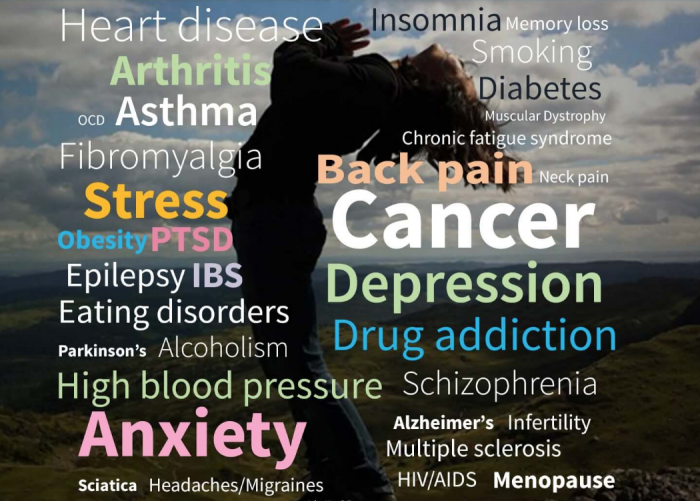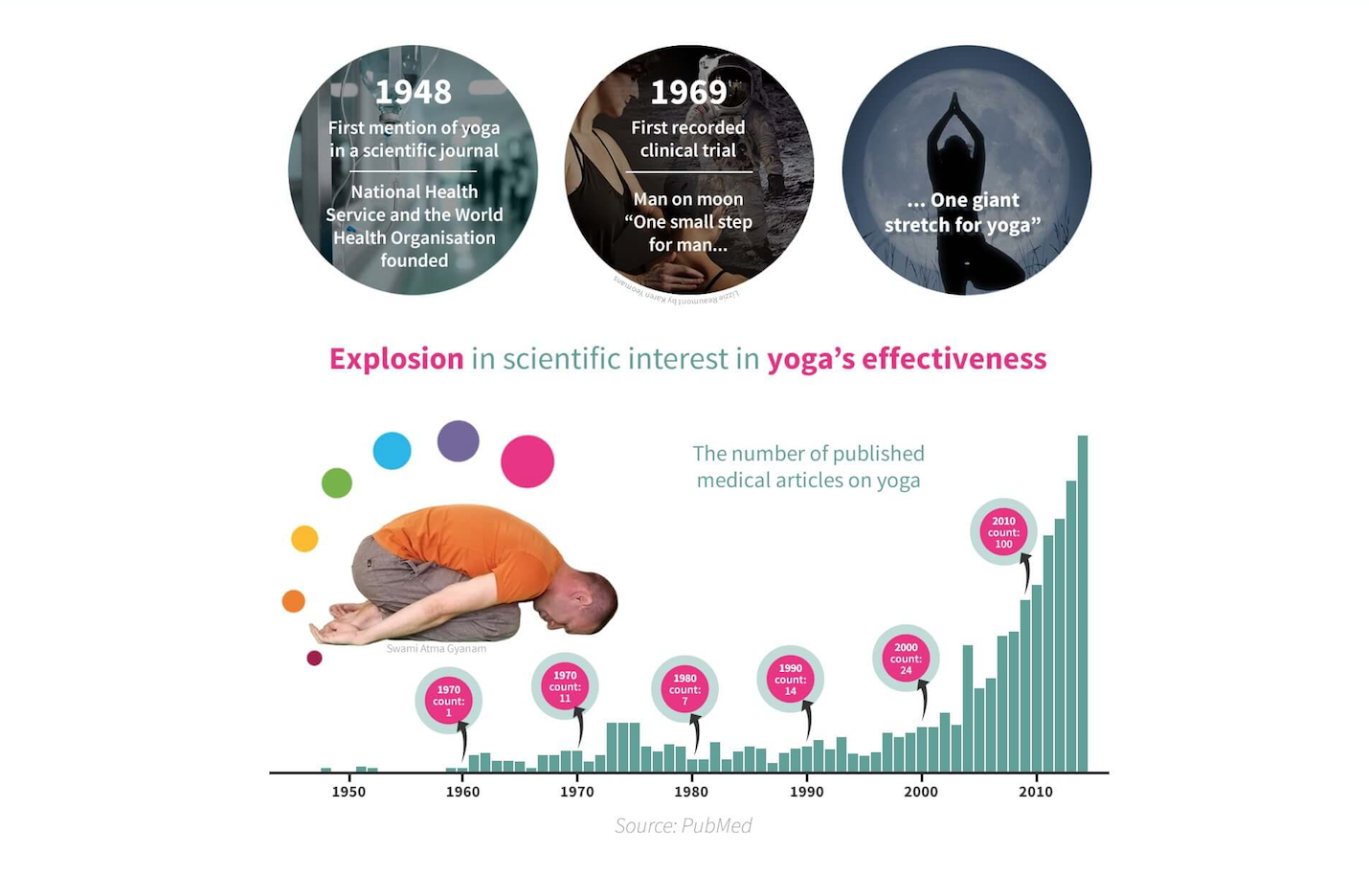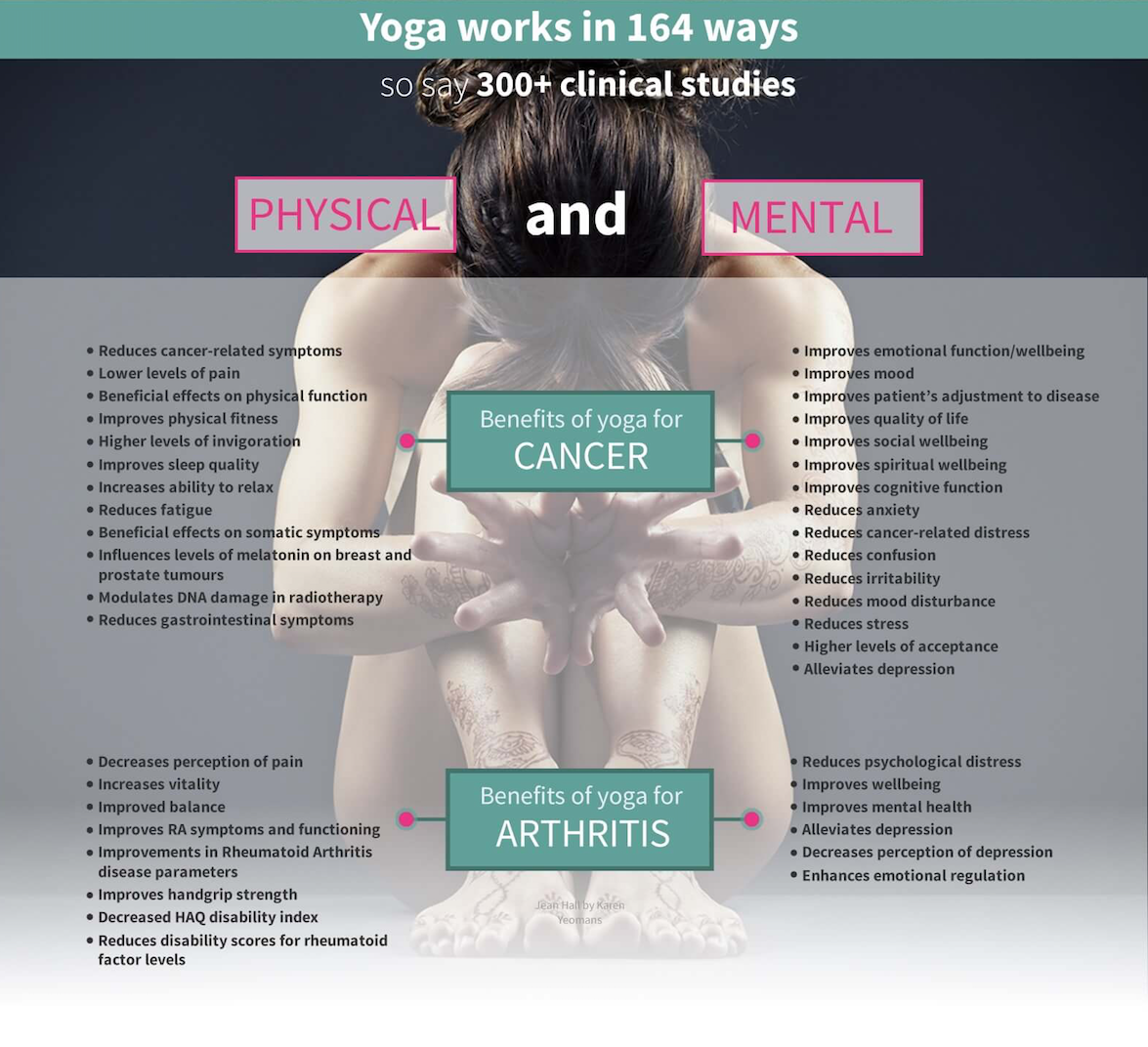
Image courtesy of YogaClicks. Teacher: Julee Yew-Crijns
I was 40 years old, single, burnt out and diagnosed with clinical depression. The only things that made me feel better were wine, shopping and my mum. I had found the answer to life’s biggest questions in the bottom of a bottle several times, but had woken up unable to recall what they were. My mum always thought she had the answer, but sometimes I disagreed. And even after years of trying, I had to concede that lasting happiness probably didn’t lie in another pretty dress.
I discovered yoga on a personal development holiday. I can’t say the daily group therapy sessions, complete with pillow bashing and primal screaming, had the answer, but Kate did. She was traveling solo; her only company a blue sticky mat and a recording of her yoga teacher’s class.
She spent the afternoons basking by the pool, reading Paramahansa Yogananda’s Autobiography of a Yogi and the early evening on the hotel lawn making every asana look effortless, as if it had come floating down from heaven on the wings of angels. I noticed that her bendy pretzel-like body and graceful, soft yogic actions cast an unearthly spell over the male guests and left her looking at peace with the world. By the end of the holiday she had a boyfriend, and I had the name of her teacher.
Yoga became the perfect antidote to the demands of my life in advertising. My expenditure on classes, tank tops and meditation mist began to outstrip the amount spent on Main Street, and bit-by-bit my depression began to lift. When one day I woke up to find myself the victim of an ad agency power coup, I decided to take a six-month career break. I’d go on a yoga school pilgrimage, to India and find myself a guru who could lead me from darkness to light.
I never did find that guru, but six months of daily yoga practice and meditation trained me to focus on the present, and help me break the cycle of catastrophic thinking that had locked me in mental pain. I came home in touch with my own inner guru. The one who says be content with what you have. The one who says happiness is always available to us, we just have to look inside ourselves. The one who says there is perfection in imperfection. The one who says life is a delicate balancing act. One-part a mug of Maharishi Ayur-Ved Calming Vata Tea and standing on one-leg yogic tree poses. One-part a glass of wine and the odd wobble.
This direct experience of the power of yoga and meditation got me interested in the science. Initially using Google Scholar, and then PubMed, I found over 20 studies demonstrating how yoga and meditation benefit depression. Collectively these studies strongly suggest that stretching out your muscles can help relieve tension and balance your mood, and that building physical strength can also build confidence in your ability to deal with whatever the world may throw at you.
Backbends and other dynamic postures that open the heart have been found to be particularly useful. Going to a yoga class means you are around other people, which can be a real tonic when you’re feeling sad and lonely. Then, there’s the deeper work, all of which I’d experienced—the training of the mind to focus on the present, and breaking the cycle of depressing thoughts concerning a past we can’t change and a future we can’t know.
More clinical studies are needed, but the available studies individually and collectively point to yoga and meditation’s potential to alleviate depression itself, anger, anxiety and the so-called “neurotic symptoms” of depression. To quote a few examples:
“A 2009 review of yoga in the treatment of mood and anxiety disorders concluded: ‘In depressive disorders, yoga may be comparable to medication and the combination superior to medication alone. There is reasonable evidence for its use as second-line monotherapy or augmentation to medication in mild to moderate major depression and dysthymia, with early evidence of benefit in more severe depression.” Asian Journal of Psychiatry, volume 2, issue 1, Tricia L. da Silva, Lakshmi N Ravindran, Arun V. Ravindran. Centre for Addiction and Mental Health, 250 College St., Toronto, Ont., Canada M5T 1R8)
“A 2004 study on Yoga Intervention For Young Adults With Elevated Symptoms Of Depression concluded ‘Subjects who participated in the yoga course demonstrated significant decreases in self-reported symptoms of depression and trait anxiety. These effects emerged by the middle of the yoga course and were maintained by the end. Changes also were observed in acute mood, with subjects reporting decreased levels of negative mood and fatigue following yoga classes. Finally, there was a trend for higher morning cortisol levels in the yoga group by the end of the yoga course, compared to controls.'” Alternative Therapies in Health and Medicine, volume 10, issue 2. Alison Woolery, Hector Myers, Beth Sternlieb, Lonnie Zeltzer. Department of Psychology, University of California, Los Angeles.)
“A meta-analysis of yoga for prenatal depression reviewed six randomized control trials, consisting of 375 pregnant women. When compared with comparison groups (e.g., standard prenatal care, standard antenatal exercises, social support, etc.), the level of depression statistically significantly reduced in yoga groups. Interestingly one subgroup analysis estimated the effects of two kinds of yoga on prenatal depression. The level of depression was significantly decreased in the integrated yoga group (which included pranayama, meditation or deep relaxation) but was not significantly reduced in the physical-exercise-based yoga group, suggesting meditation is key to a successful outcome.” (Yoga for prenatal depression: a systematic review and meta-analysis. BMC Psychiatry Volume 15: Issue 14 2015. Authors: Hong Gong, Chenxu Ni, Xiaoliang Shen, Tengyum Wu, Chlunlei Jiang. Faculty of Psychology and Mental Health, Second Military Medical University, Shanghai, People’s Republic of China.)
Read more clinical studies here.

Image courtesy of YogaClicks. Teacher: Swami Atma Gyanam Saraswat
Inspired by the corollary between my experience and the evidence, and ever the daughter of a scientist, I started investigating yoga for other conditions. There was no shortage of clinical studies. The first mention of yoga in a science journal was in 1948, the year the British National Health Service, and the World Health Organisation were founded. In 1969 man landed on the moon and the first clinical trial was recorded. Since then there has been something of an explosion, gathering greater momentum over the past decade.
I began classifying these studies, starting with other conditions close to my heart: from my mother-in-law’s diabetes to my father’s cancer, from my mother’s back pain to a friend’s alcoholism. Before I knew where I was I’d created a library of 300 clinical studies, all of them from renowned institutions. Individually and collectively they prove that yoga helps with life’s health challenges—from anxiety and stress to coping with cancer.
My analysis of those 300 clinical studies proves that yoga works in 164 ways-–both mental and physical. From modulating DNA damage in radiotherapy, to improving the handgrip of arthritis sufferers. From improving sleep quality to reducing perceptions of pain.

Image courtesy of YogaClicks. Teacher: Jean Hall by Karen Yeomans Photography.
My task now is to spread the word that yoga works in all these ways.
I did an analysis of Google searches to find out how much awareness there is of yoga as a treatment for these 30 health conditions. The results were conclusive. The only condition people know yoga can treat is back pain; searches for “yoga for back pain” ran at 15,000 a month globally.
But people don’t know that yoga helps with many other common conditions. Searches for “yoga for asthma” run at only 1,300 globally. Searches for “yoga for migraine” run at 880 a month. Even yoga for stress, which a lot of people say they come to yoga for, only gets 1,900 monthly searches.
And yet there are already numerous studies on yoga for each of these conditions; 15 on migraines, 14 on asthma, 19 on stress—with many more in the pipeline.
Please help me spread the word about yoga for health conditions by sharing this post, and next time someone tells you about their health condition, please feel free to quote a clinical study or five! The world will be a healthier, happier place when everyone is powered by yoga!
~
~
~
Author: Lucy Edge
Image: Courtesy of Author
Editor: Travis May


 Share on bsky
Share on bsky




Read 0 comments and reply